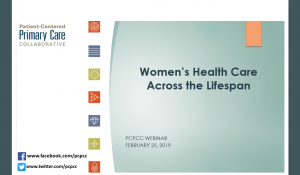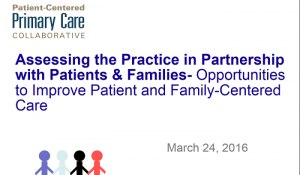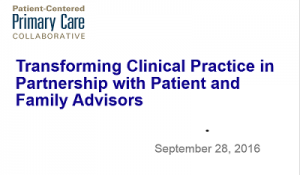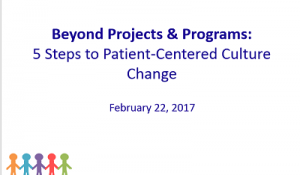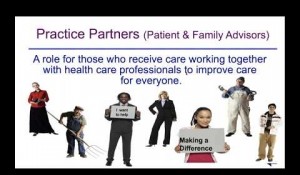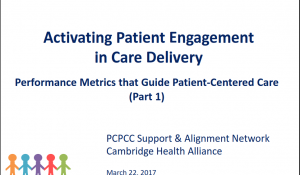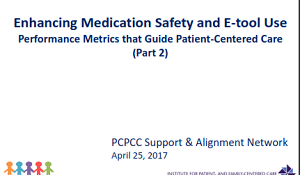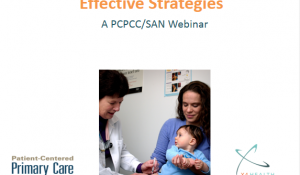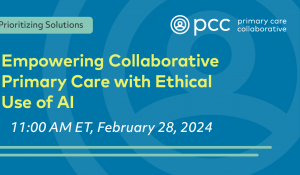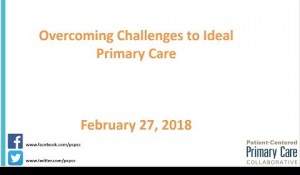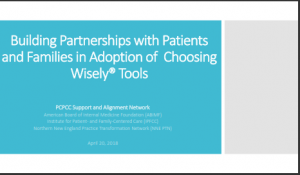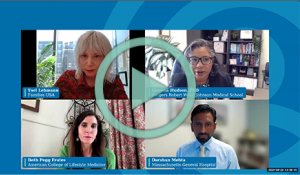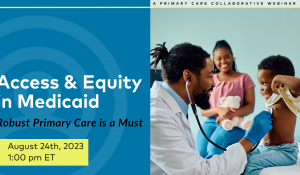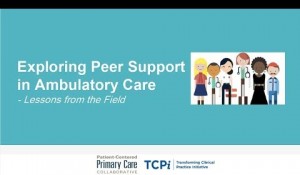You are looking at an archived version of our site. Please visit thepcc.org for a fresh, new experience!
Person- & Family-Centered
- Primary care is focused on the whole person - their physical, emotional, psychological and spiritual wellbeing, as well as cultural, linguistic and social needs.
- Primary care is grounded in mutually beneficial partnerships among clinicians, staff, individuals and their families, as equal members of the care team. Care delivery is customized based on individual and family strengths, preferences, values, goals and experiences using strategies such as care planning and shared decision making.
- Individuals are supported in determining how their family or other care partners may be involved in decision making and care.
- There are opportunities for individuals and their families to shape the design, operation and evaluation of care delivery.
Resources
June 2024
The Lancet - January 2020
In Their Words: Consumers' Vision for a Person-Centered Primary Care System - November 2019
Family Medicine - November 2018
Harvard Medical School Center for Primary Care - July 2017
The model of Direct Primary Care is a subscription-based model aiming to circumvent the barriers posed by coding and payment schemes in traditional fee-for-service care. This model improves continuity as well as accessibility of care for patients. It also works to focus on the patient as a person rather than focusing on the payment scheme, making care more equitable.
Glucose Self-monitoring in Non–Insulin-Treated Patients With Type 2 Diabetes in Primary Care Settings - June 2017
American Academy of Pediatrics, National Resource Center for Patient/Family-Centered Medical Home - May 2017
This resource provides practical tools for providers to increase family engagement in pediatric care. It emphasizes the importance or creating a plan and sharing decision-making responsibilities with patients and their families.
Journal of the American Geriatrics Society - February 2017
Journal of the American Board of Family Medicine - July 2016
American Academy of Pediatrics - May 2015
The American Academy of Pediatrics documents 17 case studies of practices nominated as exemplary patient- and family-centered medical homes. These approaches are essential to their efforts to address quality, lower costs, workforce control, technology, and safety. Primary care practices functioning as medical homes can partner with both families and community resources to increase family-centeredness. These case studies showed among the practices a greater use of health IT, improved communication, and enhanced access to medical staff outside of regular hours.
Journal of General Internal Medicine - February 2015
As practices transform towards the PCMH model, it is important for clinicians to be trained in a more person- and family-centered manner of care. This ensures that patients are getting the right care at the right time, thus improving the patient experience while preventing unnecessary costs.
Community Catalyst - January 2015
This resource emphasized the importance of a person- and family-centered healthcare system. It is intended as a resource for consumers and advocates to be able to influence healthcare transformation. While it is well-known that advocates want our health system to be person-centered, this guide acts to help consumers realize what this actually means and what it looks like in practice.
American Journal of Managed Care - December 2014
Thus study aims to address concerns of time constraints when considering the implementation of personalized, person-centered care strategies. They implemented this care model in a busy urban clinic and found that it did not cause much disruption or time delays and it improved the quality of care.
Webinars
Secondary menu
Copyright © 2024 Primary Care Collaborative



